"We've got to take that chance… unless we want the commies to beat us to it!" -Susan Storm, Fantastic Four #1 1961
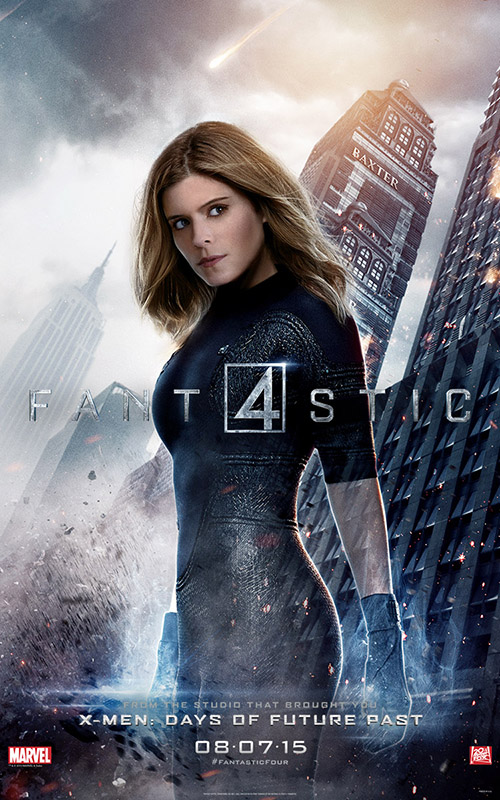 The story is fairly common, a modern take on the American Dream. Forty year old Stanley Lieber considers leaving his job at Magazine Management Company before being convinced by his wife Joanie to use his boss's new mandate as the chance to break from convention. The new mandate, begin publishing super-hero comics; the result, The Fantastic Four #1 (Nov. 1961). Emerging from the pulpy giant space monster comics that paid the rent for Jack Kirby and Stan Lee (the name Lieber was reserved for that great American novel), The Fantastic Four redefined super-heroes and revitalized a niche industry. Fifty-four years later, superheroes are commonly found in all our media, even walking city streets, in cosplay or on patrol.
The story is fairly common, a modern take on the American Dream. Forty year old Stanley Lieber considers leaving his job at Magazine Management Company before being convinced by his wife Joanie to use his boss's new mandate as the chance to break from convention. The new mandate, begin publishing super-hero comics; the result, The Fantastic Four #1 (Nov. 1961). Emerging from the pulpy giant space monster comics that paid the rent for Jack Kirby and Stan Lee (the name Lieber was reserved for that great American novel), The Fantastic Four redefined super-heroes and revitalized a niche industry. Fifty-four years later, superheroes are commonly found in all our media, even walking city streets, in cosplay or on patrol.
The success of Marvel would write a significant chapter in the history of American comics and merchandising, with The Fantastic Four providing a handful of interesting footnotes. Not nearly as iconic as The Dark Knight or Marvel's own Spider-Man, during its pinnacle the Fantastic Four was a spectacle of Pop-Art invention - a family of four adventure heroes, each with a power matching a basic element: fire, water, earth and air. The psychedelic science-fiction and bizarre body politics that typified the FF of the 60's was both ahead of its time and likely the unintentional result of Kirby and Lee's collaborative style.
"I-I never though you would be a coward." -Susan Storm, Fantastic Four #1 1961
Among the first of Marvel's successful licensing deals was The Fantastic Four cartoon created by animation powerhouse Hanna-Barbera Productions. Twenty-episodes of this cartoon series initially aired from 1967 to 1968. It was produced economically and fairly true to its source material, scrubbing away any of the source material’s anti-communist sentiments and pop-philosophy to remain innocuous.
One year after George Lucas's Star Wars (1977), a second animated series was produced. Departing further from the source material, the character Jonny Storm, The Human Torch, was replaced with a cute robot sidekick. Originally a solo character who first appeared in Marvel Comics #1 (Oct. 1939), the Human Torch had been optioned by Universal Studios for a live-action movie. There were theories that the producers feared mass audience self-immolation at the time, probably fueled by the nearly 100 cases of self-immolation covered by the New York Times and The Times between 1963 and 1971. Among such reports one would find Buddhist monk Thich Quang Duc's protest in Vietnam (1963) and Ryszard Siwiec's protest against the Soviet-led invasion of Czechoslovakia (1968).
Despite themes of invention and exploration, the Fantastic Four remained a product stuck in its times while Marvel found broader appeal with properties like The X-Men. Subsequent animated series appeared in 1996 and 2006, but neither were memorable and none captured the energy and wonder that surely leaped off those 60's era comic pages. Only Brad Bird's love letter to the Fantastic Four in PIXAR Studios' THE INCREDIBLES (2004) succeeded in bringing that spectacle to the modern day.
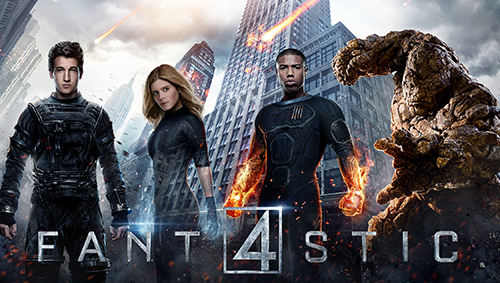
"Hear That?? It's the Cosmic Rays!! I-I warned you about 'em!!" -Ben Grimm, Fantastic Four #1 1961
An official live-action adaptation of The Fantastic Four (2005) crash-landed in theaters a year after the superior PIXAR movie. It spawned a worse sequel in 2007. There was, however, another film which predates them all and carries with it the air of counter-cultural appeal similar to the original comic. It is colloquially known as Roger Corman's Fantastic Four.
In 1986, German film producer Bernd Eichinger's Neue Constantin Film Company purchased the rights to a Fantastic Four film adaptation for approximately $250,000. Both Warner Bros. and Columbia Pictures, declined to finance any production while Marvel rejected an offer to extend the option scheduled to expire on December 31, 1992. The September prior, Eichinger teamed with the godfather of B-movies, Roger Corman, who agreed to produce the film on a $1 million budget.
Best known for his eight Edger Allan Poe movie adaptations, often starring Vincent Price, (1959 - 1964), Corman has directed 55 films over his fifty-year career. Added to that he's produced 385 films ranging from Night of the Blood Beast (1958) to Death Race 3: Inferno (2013). He was also the founder of New World Pictures, the production company he sold in 1983, a mere three years before they acquired the Marvel Entertainment Group, the corporate parent of Marvel Comics. In Hollywood, timing is everything.
Corman assigned the project to director Oley Sassone, who also directed Don "The Dragon" Wilson's Bloodfist III: Force to Fight (1992). Sassone completed filming in just over 20 days. Come the summer of 1993, trailers were released and the cast made an appearance at San Diego Comic Con, which was a novel promotional ploy back then. The movie would never be officially released, though bootleg VHS versions can still be found at Comic Cons, if you know where to look.
It’s not completely clear why this film wasn’t officially released. There are varied and contradictory reports. While Stan Lee claims the movie was only made to secure licensing rights, in 2005 Roger Corman told Los Angeles Magazine "We had a contract to release it, and I had to be bought out of that contract." According to Marvel, executive Avi Arad caught wind of the movie promotions while on vacation and immediately called Eichinger to say "Listen, I think what you did was great, it shows your enthusiasm for the movie and the property, and... I understand that you have invested so-and-much, and Roger has invested so-and-much. Let's do a deal." For about two-million dollars cash, the final cut of the movie was burned. A documentary illuminating the production and destruction of this adaptation remains under production. It may prove more interesting than any version of the Fantastic Four and is aptly titled DOOMED.
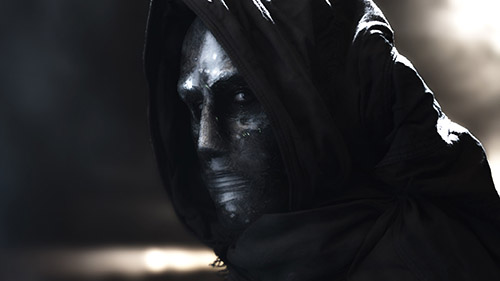
"You don't have to make a speech, big shot! We understand!!" -Ben Grimm AKA The Thing, Fantastic Four #1 1961
In rebooting The Fantastic Four, Director Josh Trank faced an uphill battle convincing producers that the dark and gritty reboot style that made Batman Begins (2015) a success has since fallen out of fashion. Audience sensibilities have shifted so nowadays superheroes can have fun. As evidenced by Ant-Man, today's superhero movies need not be cast exclusively in shades of blue and gray. Missing another opportunity to bring Jack Kirby's famous "Kirby-tech" to life, the movie initially presents itself as a bland kid-friendly science-fiction tale.
This latest reboot takes its time establishing the core relationships of the titular characters and is cast with actors that are charming enough to watch interact. The controversy which accompanied news that African-American actor Michael B. Jordan was cast as Johnny Storm (The Human Torch) reveals itself to be just hot air. Jordan, along with Miles Teller as Reed Richards and Kate Mara as Sue Storm, are believable in their roles as modern day super-do-it-yourselfers, enrolled in the ultimate charter school. This leaves Jamie Bell as the questionable casting choice as blue-collar Ben Grimm. This half of the movie really belongs to Reg E. Cathey. Cathey plays against his most recognizable character of the ribs guy from the Netflix series House of Cards by portraying a loving father, the chief scientist and administrator, Franklin Storm.
Once the movie gets to the invention gone wrong, it's clear that Trank is doing his best to avoid admitting superheroes will be involved. The inciting incident which results in superpowers is treated with something resembling logic: Jonny's capsule was on fire so he got fire powers, there were rocks in Ben's and Reed was reaching for something, etc. It's when the characters are coping with their changed bodies that the germs of a good movie can be detected. Rather than a Communist threat, it’s the Military Industrial Complex acting as the behind-the-scenes bad guy. But there's no real commitment to that theme or any other, beyond franchise service.
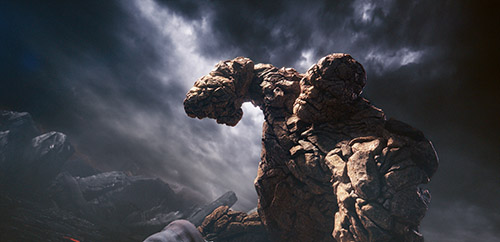
"Don't try to talk your way out of it Mister! I'm gonna mop the place with you!" -Ben Grimm AKA The Thing, Fantastic Four #1 1961
While improved special effects don't justify a movie, it's a relief that a CGI Thing looks (and sounds) better than previous rubber suits. There are moments when The Thing comes off as very formidable. Here credit is due to movement choreographer, Terry Notary. He is best known for teaching people to move like apes - in motion-capture suits or latex masks depending on which Planet of the Apes remake or reboot is discussed. His demonstrations of simian movement makes fascinating viewing and perhaps offer a glimpse into legends of Monkey Kung Fu founder Kou Si.
With no fight-coordinator listed, blame can be shared between stunt coordinator Brian Machleit and assistant Jeffrey J. Dashnaw. Dashnaw boasts "whoo shoo and ching ching pow" as among his training history. Readers may instantly recognize the misspelling of the former, but may not be amused to learn that "Ching Ching Pow" is an onomatopoeia for the sounds of a gun rather than any form of Kung Fu. Together they effectively under-utilize Kate Mara’s stunt-double Mandy Kowalski, who is trained in Tang Soo Do and boxing, as well as Micheal B. Jordan’s stunt-double Jason Chu, whose more ubiquitous "Martial Arts/MMA" skill set also includes short sword.
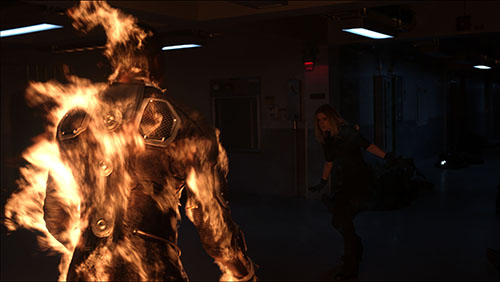
Within heroic fiction - especially comics – it's commonly thought that the hero is defined by his antagonist. The Fantastic Four possesses one of comics' iconic villains in Doctor Doom. A combination of Faust, C. A. Rotwang and Machiavelli, this armored, sorcerous, mad-scientist despot is the kind of foe from which only a Pyrrhic victory should be earned. The best movie adaptation of Doctor Doom remains Darth Vader circa 1978 - clearly George Lucas was reading Marvel's Super-Villain Team-Up series (starring Doom 1975-1978) when instructing his art department to make Vader look more like a Samurai. But today, we are treated to plastic-wrapped internet troll with a collection of the vague CGI super-powers and incomprehensible motivations.
There is a wonderfully dark escape from a laboratory sequence which might be too bloody for the youngsters that this movie targets. Anyone older will recognize it as the sequence Luc Besson stole from Katsuhiro Otomo's Akira (1988) and used in the Scarlett Johansson vehicle Lucy (2014). Once into the final act, the action is a cyclone of CGI effects and destruction, dubbed over with exposition meant to explain the stakes (fate of the earth!) and the solution (teamwork!) Neither are effective in any substantial manner. So while there is more energy in this version than any other, the only real sense of wonder left is whether the promised sequel will be any better.
"They're only rays of light! You can't feel 'em-- but they'll effect you just the same!" -Ben Grimm, Fantastic Four #1 1961
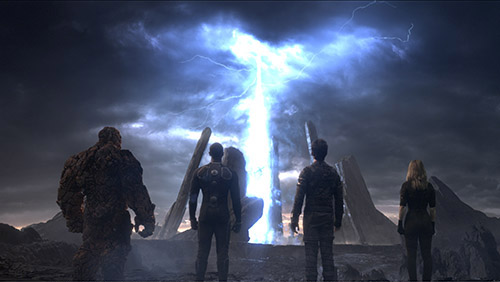
About
Patrick Lugo :
![]() Patrick Lugo is Senior Designer at Kung Fu Tai Chi Magazine and has done design and illustration work for several martial art books. Most notably, he illustrated the award winning
Little Monk & the Mantis. More of his artwork and comics can be found at PLUGOarts.com.
Patrick Lugo is Senior Designer at Kung Fu Tai Chi Magazine and has done design and illustration work for several martial art books. Most notably, he illustrated the award winning
Little Monk & the Mantis. More of his artwork and comics can be found at PLUGOarts.com.
![]() Print Friendly Version of This Article
Print Friendly Version of This Article
















